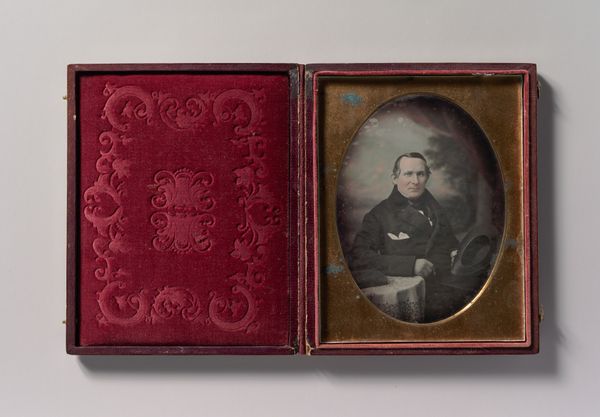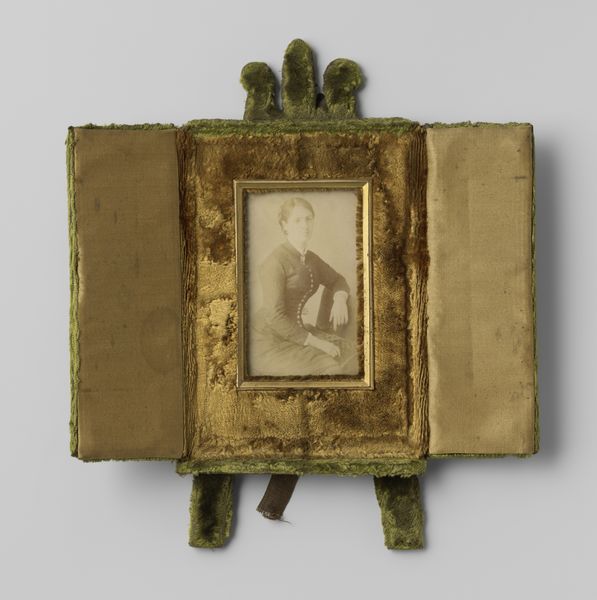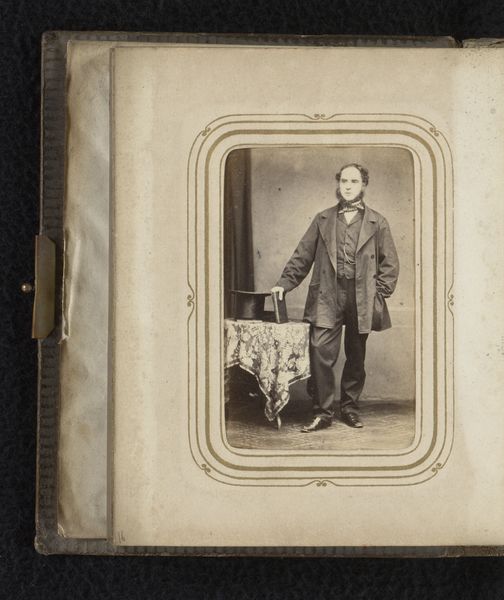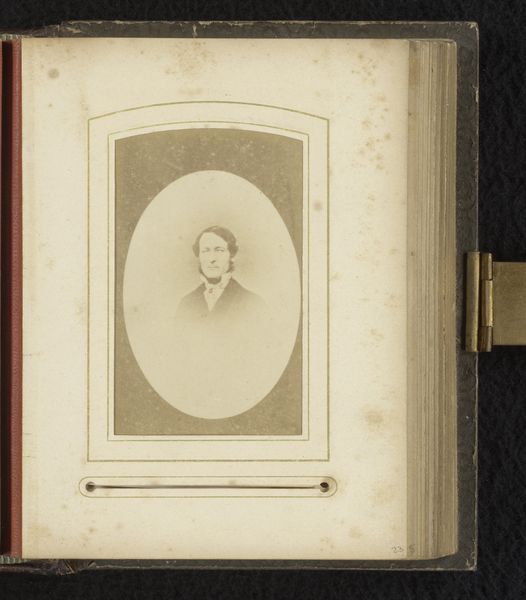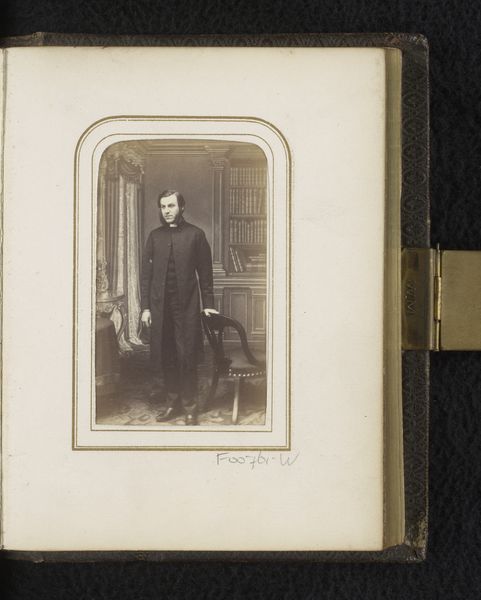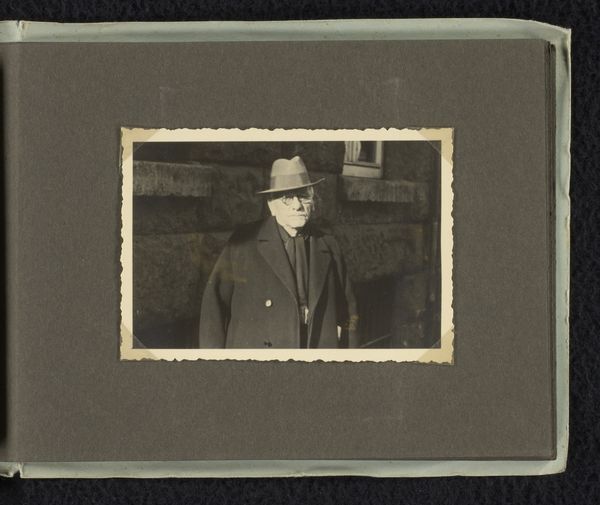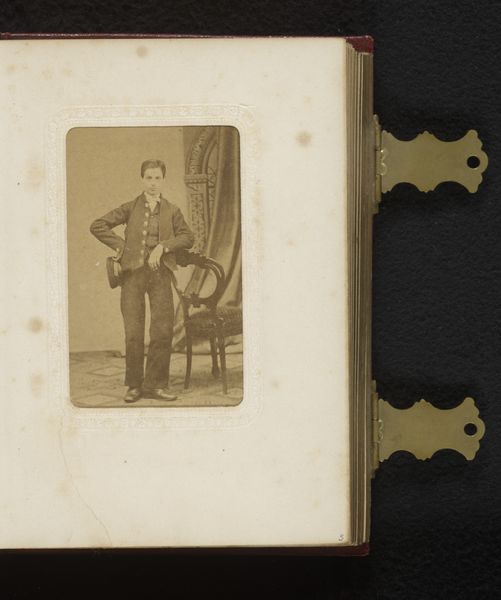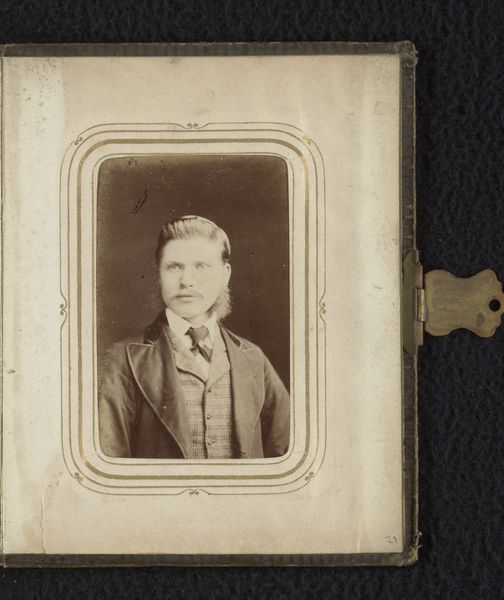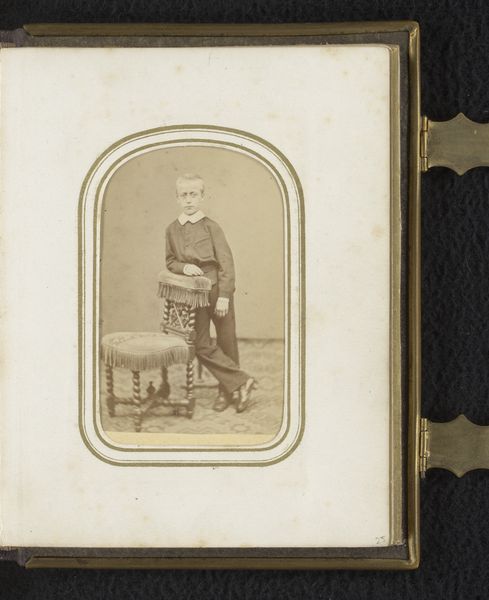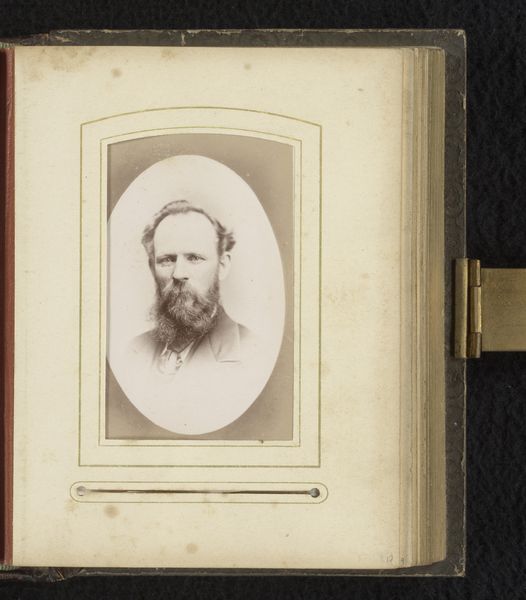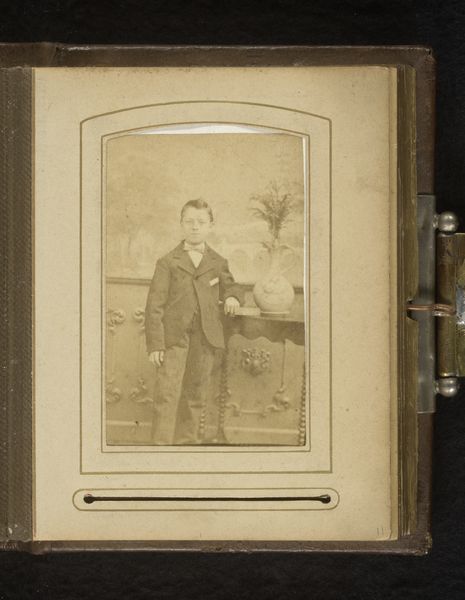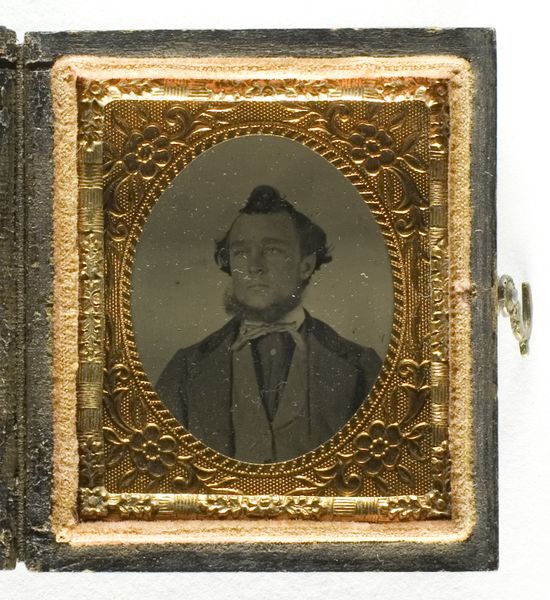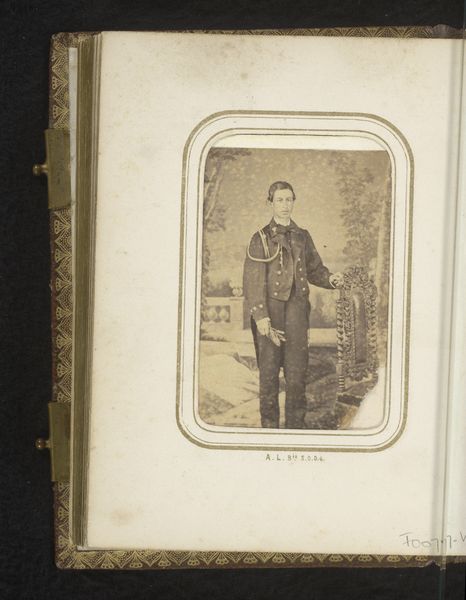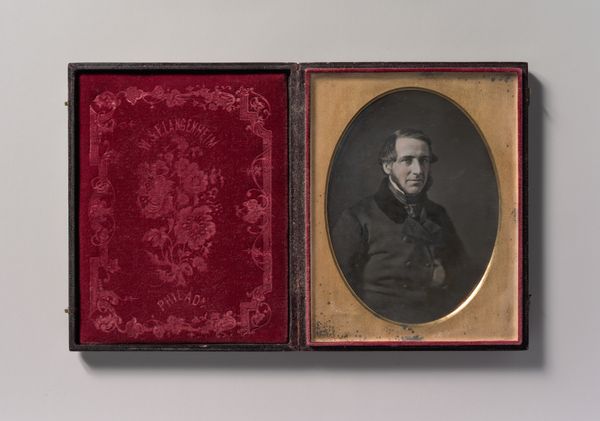
Naaigarnituur met schaar, naaigerei en een portret van een onbekende staande man in uniform c. 1885 - 1920
0:00
0:00
photography
#
portrait
#
still-life-photography
#
photography
Dimensions: height 195 mm, width 152 mm, thickness 15 mm
Copyright: Rijks Museum: Open Domain
Editor: This is "Naaigarnituur met schaar, naaigerei en een portret van een onbekende staande man in uniform," a photograph by Jac. Schotel Szn., dating from around 1885 to 1920. I find the combination of the sewing tools with the portrait to be rather strange; the photograph seems to be the centerpiece in some odd way. What catches your eye? Curator: Immediately, the arrangement speaks of contained narratives. The juxtaposition of the portrait and domestic tools—scissors, needles—suggests the complex lives people lived. Uniform, family, craft; duty and comfort. These weren’t separate spheres. Editor: So, you're saying the photograph isn’t just a decorative element but a central theme around the ideas of duty and domesticity? Curator: Precisely. Consider how objects acquire meaning. Sewing signifies care, nurture, maybe even quiet resistance, while the military uniform embodies structure and control. Think about how these images were consciously assembled and reflect social conventions. Where do you think this was located? Editor: Maybe a home? A cabinet, or a sewing box? Curator: Possibly. Imagine this displayed on a mantelpiece, a private memorial accessible in daily moments. Each object in this still life performs a role in a biographical narrative, speaking to absence, duty, memory. The owner would have had a strong sense of sentimentality. The whole format looks rather theatrical, almost sacred! Editor: That's fascinating. I hadn't thought about it as a contained story, almost like a tiny stage set! This really sheds new light on how personal history is constructed through everyday items. Thanks! Curator: A pleasure, as always. It’s vital to remember that symbols hold vast amounts of layered meaning over time.
Comments
No comments
Be the first to comment and join the conversation on the ultimate creative platform.
